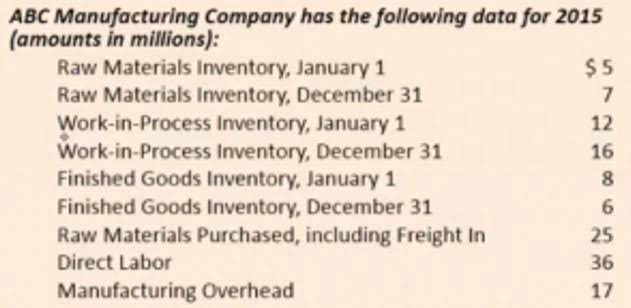
Horizontal analysis is your go-to method for comparing financial data across multiple periods. It’s like having a time machine for your finances, where you can spot trends, identify anomalies, and essentially read between the lines of those monotonous columns https://www.bookstime.com/ of numbers. Horizontal analysis isn’t limited to external stakeholders; it is also a valuable tool for companies to evaluate their own financial performance. By comparing financial data over time, organizations can make informed decisions and strategic adjustments. Once you have gathered the necessary financial statements, the next step is to calculate the dollar amount changes for key financial metrics between the base year and the current year.

Key Objectives and Purposes:
By comparing revenue figures from different periods, analysts can gauge whether the company is expanding its market presence horizontal analysis formula or facing challenges in maintaining its sales levels. This metric is especially useful for identifying seasonal trends or the impact of market conditions on the company’s performance. On the other hand, total current liabilities, common stock, total current assets and cash has increased value.
- This analysis also gives a better picture of the performance metrics of the company and if it’s improving or on a decline.
- Operating expenses rose from $3.5 million to $4 million during the same period.
- Consistency is important when performing horizontal analysis of financial statements.
- Horizontal analysis is a financial review of a company’s performance over a set number of accounting periods.
- The left hand side of the balance sheet shows asserts of Annapurna Textile Inc. whereas the right hand side shows the liabilities and equity as on Dec 2006.
- This can help determine what is a clear trend and what may be a one-off event.
Start free ReadyRatios financial analysis now!
The left hand side of the balance sheet shows asserts of Annapurna Textile Inc. whereas the right hand side shows the liabilities and equity as on Dec 2006. In the above balance sheet, the assets are arrange in order of their convertibility into cash and liabilities and equity are arranged in order of their maturity. The proper interpretation of financial statement requires a clear and correct understanding of the basic divisions of balance sheet.
Step 2: Apply the Horizontal Analysis Formula

Ratios such as earnings per share, return on assets, and return on equity are similarly invaluable. These ratios make problems related to the growth and profitability of a company evident and clear. However, the percentage increase in sales was greater than the percentage increase in the cost of sales. Several interesting balance sheet changes are apparent in the tables below.
- Horizontal analysis is often referred to as trend analysis, but the latter term has broader applications and is not specific to financial statements.
- The growth rates of 10%, 9.09%, and 8.33% indicate a positive trend in the company’s asset accumulation.
- When you trying to name one popular technology company you immediately remember Apple.
- One reason is that analysts can choose a base year where the company’s performance was poor and base their analysis on it.
- To increase accuracy, it is important to confirm breakouts with additional data rather than relying on price action alone.
- Start by choosing the financial statements that are relevant to your analysis objectives.
- It’s the flashlight that cuts through the fog of financial data, showing you where the real opportunities (and risks) lie.
- Industry benchmarking involves comparing a company’s financial performance to industry peers or standards.
- That is done by looking at the annual or quarterly figures of the company and comparing it over a number of years.
- The horizontal analysis as the name suggest is the analysis done on horizontal basis for the same item of a company’s financial statements generally for two or more years.
- Analyzing liquidity changes over time helps you gauge the company’s ability to cover its immediate cash needs.
These changes express how much a specific financial item has increased or decreased over time in terms of a percentage. Analyzing percentage changes helps you determine not only the magnitude of the change but also its direction, whether it’s positive or negative. Utilize financial ratios, such as profitability ratios, liquidity ratios, and solvency ratios, to compare the company’s financial performance with industry benchmarks and competitors. This provides a comprehensive view of the company’s relative strengths and weaknesses.

Companies can compare their financial performance against industry peers to identify strengths and weaknesses. For example, if a company’s revenue growth is lagging behind industry averages, it might indicate a need for strategic changes. Similarly, if a company’s operating expenses are higher than those of its competitors, it might highlight areas where efficiency improvements are needed. This comparative approach helps companies stay competitive and align their strategies with industry best practices. Horizontal analysis is a method of financial statement analysis used to compare statement items (or financial ratios) across multiple periods.
Ask Any Financial Question

It occurs when price breaks above a key resistance level, typically leading to bullish momentum. While support breakouts indicate bearish trends, resistance breakouts suggest an unearned revenue influx of buyers pushing price higher. Ultimately, businesses that prioritize strategic analysis are better equipped to navigate challenges, seize opportunities, and stay ahead of the competition. By combining effective analysis with the right technology, such as Krisp, companies can refine their decision-making process and drive meaningful, long-term success. These models provide businesses with a structured approach to evaluate their current position, identify opportunities, and make strategic decisions effectively.
